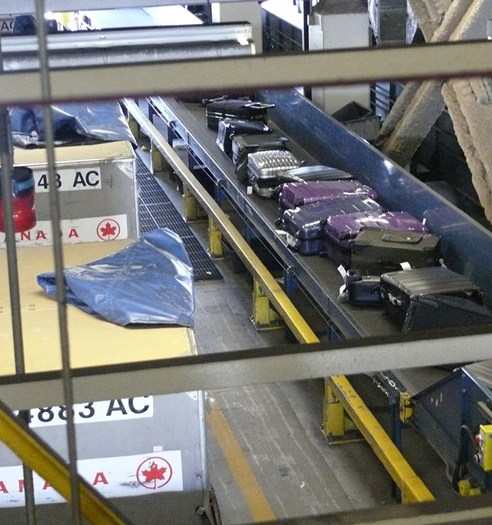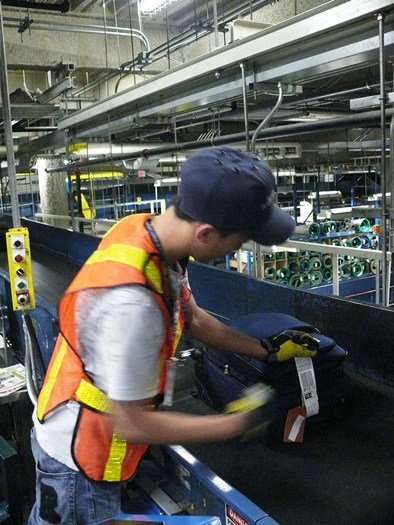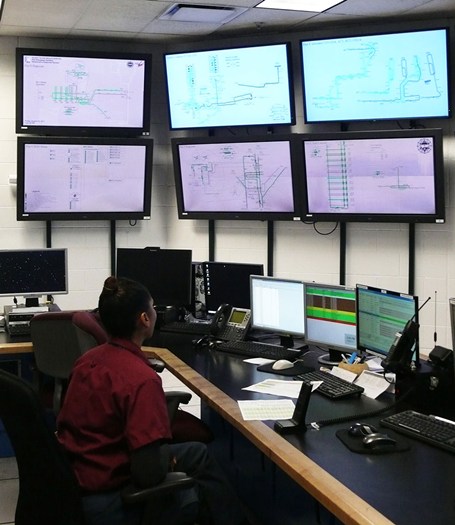TORONTO - The passengers at Pearson International Airport’s Terminal 1 slowly weave their way through a long line waiting to surrender their luggage to the Air Canada agents who quickly process the bags, place them on a conveyor belt, push a button and send them on their way.
Little do the passengers know that their luggage is embarking on a journey every bit as exciting as theirs.
While we all take for granted that our bags will magically appear at our intended destination, few people know the complex process needed to get suitcases from check-in to the right plane and eventually to the place you are heading.
And it all starts when the bags disappear behind the flapping rubber doors at check-in known as the “dog house” and enter an underground world filled with high-tech computers, chubby little cars, an army of workers and a super-fast electronic highway that’s monitored by a security system that would make the CIA envious
The man who governs this underground world is Luis Demestre, the Greater Toronto Airport Authority’s Baggage Handling Systems Co-ordinator whose staff handled more than 27 million pieces of luggage in 2012 — Terminal 1 processed 17 million bags while Terminal 3 handled another 10 million.
Demestre, an aviation management specialist, is passionate and proud of the crucial and physically demanding job he and his staff do, especially on the busiest days at Pearson — during the December/January holiday period more than 65,000 bags a day pass through Canada’s largest airport.
“There are peaks and valleys in this business, but Christmas, New Year’s and March Break really put us to the test,” says the accommodating Demestre, who offers to show me Pearson’s underground world — located right under passengers’ feet in Terminal 1.
But first, there’s a security check that must be completed and it’s far more intense than anything passengers face, including a pat-down and a wave over your body with a security wand.
“Security is priority one in our world,” says Demestre, who reveals that if every seat on an aircraft is occupied, as many as 300 bags can be onboard.
The baggage highway at Pearson stretches 20 kilometres — 14 kilometres under Terminal 1 and 6 kilometres at Terminal 3 — and it takes just five minutes for your luggage to go from check-in to the plane.
Most major airlines like Air Canada employ their own baggage handlers, but the GTAA is responsible for luggage while it makes its way through the airport’s underground web.
“Watch your head,” Demestre warns as we arrive in the underground world of narrow walkways, ladders, low-hanging ceilings and machinery that sticks out everywhere.
Above us is a labyrinth of super-fast conveyor belts, where the luggage is sorted and scanned with high-tech security x-ray equipment before reaching ground handlers, known in Demestre’s world as “under the wing staff,” who are responsible for everything from check-in to loading bags onto the plane.
When we reach one point on the “super highway for bags” our guide points to a series of scanners hanging over the high-speed belts and says this is where bags are routed to the proper planes.


Above: Getting bags from check-in to the plane takes a lot of skill and people.
“The scanners are reading the 10-digit barcode tag that was placed on your bag at check-in,” says Demestre when suddenly one of the bags is pushed off the belt unceremoniously by a mechanical arm.
“When the scanners can’t pick up the barcode, the bags are rejected at this point and staff rely on a hand-held scanner to pick up the code,” he explains. “Sometimes faded ink can be the problem.”
Maintenance is crucial in this underground world where the rubber belts and rollers that keep the super highway moving need constant attention. Because of the tight crawl spaces, lighting is also an important factor. It’s a daunting task that requires more than 3,000 cameras, known as “photo eyes,” to keep watch over.
“On average, there are about 4.4 disruptions per 1,000 bags,” says Demestre while leading me into a “control room” that looks like the bridge of the starship Enterprise.
 Left: There's an actual baggage control room.
Left: There's an actual baggage control room.
Staff in this underground control tower have their eyes glued to a bank of TVs that monitor the conveyor belts. When a stoppage occurs — signalled by a blinking yellow light — maintenance staff is quickly dispatched to solve the problem.
“One of the biggest problems we have is with straps, especially on back packs, which get lodged under the belts and cause breakdowns,” says Demestre.
In Demestre’s world, things move fast — “bags move at a rate of about 20 bags per minute on a main line and conveyor belt speeds reach 110 to 120 m.p.m. (metres per minute),” he says.
Soon, we are standing on Baggage Road where little trucks race about, dragging carts stacked with baggage. Many of the trucks are powered by electricity but for heavy loads, diesel-powered vehicles are still needed — the fumes they spit out are always a concern, so idling times are kept in check, Demestre says. He adds that the GTAA works closely with international regulatory bodies like the IATA (International Air Transport Association) to improve baggage handling procedures at airports worldwide. And while incoming passengers constantly grumble that their luggage never arrives on the carousel fast enough, Demestre says his staff targets between 20 to 30 minutes from the time the plane pulls up to the gate to the time passengers and their luggage are reunited. (NOTE: On my recent return from Beijing, my bags arrived 15 minutes after I left the plane — very impressive.)
“However, Canada’s winters have been known to throw those target times off on occasion,” he says with a smile.
And stop worrying about your luggage getting lost. While we all hand over our bags with some trepidation, lost luggage is becoming a thing of the past thanks to computer highways like the one under Pearson.
Industry sources reveal that the incidents of “mishandled” or lost luggage have dropped 24 per cent in the last few years and that has saved airlines almost $500 million U.S. in payouts to passengers.
But the biggest reason baggage handling and delivery has improved is the care and dedication people like Luis Demestre bring to their job.
Information
Main reasons why luggage goes missing: 1- Transfer baggage mishandling (52%) 2- Failure to load (16%) 3- Passenger bag switch / security or ticketing error (13%) 4- Loading / offloading (7%) 5- Airport / customs / weather or space & weight restriction (6%) 6- Arrival station mishandling (3%) 7- Tagging errors (3%